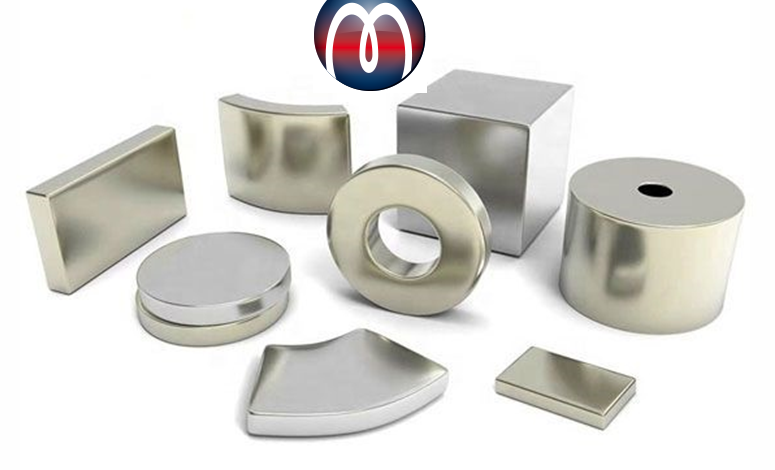Discover the Best Magnets for Sale: A Complete Buying Guide

- Magnets operate through magnetism, influenced by the movement of electric charges and magnetic fields.
- Types of magnets include neodymium (strong, used in electronics), ceramic (cost-effective), and alnico (temperature stable, used in microphones).
- Magnetic fields impact daily life, from household items to advanced technologies like MRI machines.
- Select magnets based on strength, size, application, and environmental factors (e.g., temperature, corrosion).
- Industrial magnets need to withstand tough conditions, while everyday applications can often use lighter, cheaper options.
- Quality vs. cost is crucial; investing in high-quality magnets ensures durability and performance.
- Magnets are versatile for DIY projects, such as spice jars, photo frames, and tool holders.
- Education benefits from hands-on magnetic experiments, enhancing understanding of physics and engineering concepts.
- Businesses can use magnets as promotional items, enhancing brand visibility and customer engagement.
- Choose reputable vendors for quality magnets and carefully read product labels for specifications and coatings.
- Customer reviews are valuable for assessing product quality but should be evaluated critically for authenticity.
The Science Behind Magnets: Understanding Their Unique Properties
The Basics of Magnetism: How Do Magnets Work?
Magnetism is a fundamental physical phenomenon caused by the motion of electric charges. The basis of magnetism can be understood through the concept of magnetic fields, which are produced by the movement of these charges. In the case of materials with magnetic properties, such as iron, cobalt, and nickel, the arrangement of electrons around the atoms creates a situation where magnetic moments can align in a particular direction, resulting in the material becoming magnetized. The phenomenon can be explained using two primary principles: ferromagnetism, where certain materials can become permanently magnetized, and electromagnetism, which is the ability to produce a magnetic field through electric current. It is this interplay of forces that makes magnets so essential in various applications, from household items to complex industrial machinery.
Exploring Different Types of Magnets: From Neodymium to Ceramic
Magnets come in various types, each possessing unique characteristics that suit different applications. The most powerful permanent magnets available today are neodymium magnets, which are made from an alloy of neodymium, iron, and boron. These magnets are known for their exceptional strength and are widely used in everything from motors and generators to consumer electronics and medical devices. On the other end of the spectrum are ceramic magnets, also known as ferrite magnets. These are less expensive and less powerful than neodymium magnets but are advantageous in applications where cost is a significant concern. Additionally, we have alnico magnets, made from aluminum, nickel, and cobalt, and often used in microphones and guitar pickups due to their temperature stability and strength. Each of these types caters to specific requirements, making it essential to understand their properties before making a purchase.
The Role of Magnetic Fields in Everyday Life
Magnetic fields are ubiquitous in our daily lives, influencing everything from the simple refrigerator magnet to the complex accelerators used in particle physics. They allow us to harness energy through generators and motors, drive data storage solutions like hard drives, and even enable magnetic resonance imaging (MRI) in the medical field. Understanding how magnetic fields interact with materials is crucial, as this knowledge facilitates the innovation of various technologies, simplifies design processes, and enhances the efficacy of devices that rely on magnetism. The practical applications of magnets extend far beyond what most people would envision, making this topic worthy of exploration for technology enthusiasts, educators, and curious minds alike.
Choosing the Right Magnet: Factors That Matter
Strength and Size: Finding the Perfect Balance
When selecting a magnet, the critical factors to consider include strength and size. Magnet strength is often measured in terms of pull force, which indicates the maximum weight a magnet can hold when attached to a surface. It’s vital to assess not only the required pull force but also the size and shape of the magnet, as these can significantly impact its effectiveness in specific applications. While larger magnets generally possess greater strength, space constraints often necessitate balancing size and power. Prospective buyers should carefully evaluate their needs to ensure they choose the right magnet that optimally aligns strength with size, considering the intended application and environmental factors such as temperature and exposure to corrosive elements.
Application Matters: Industrial vs. Everyday Use
The intended use of a magnet drastically affects the type of magnet one should select. For industrial applications, heavy-duty magnets designed to withstand demanding environments are necessary. These types often include heavy-duty neodymium magnets or specially coated magnets that can resist corrosion and wear, ensuring longevity and effectiveness in harsh conditions. Conversely, for everyday uses—such as arts and crafts, household fixes, or educational experiments—a more lightweight and cost-effective option like ceramic magnets would suffice. The specific application dictates the choice of the magnet, emphasizing the importance of thorough research prior to making a purchase to guarantee that the right type of magnet is employed for the right task.
Budget Considerations: Quality vs. Cost in the World of Magnets
The price of magnets for sale can vary significantly based on material, strength, size, and application. While it may be tempting to choose cheaper alternatives, it is essential to consider the quality and long-term value. Higher-quality magnets—such as neodymium—may come with a higher upfront cost but can provide improved performance and durability, ultimately leading to savings over time in industrial applications. Conversely, for basic household use or inexpensive projects, lower-cost options may suffice. It’s crucial to evaluate not just the price tag but also the potential return on investment. A poorly made magnet can fail, leading to waste and prompting the need for replacements, whereas a quality magnet can deliver outstanding performance for years without the risk of degrading.
Creative Uses for Magnets: Beyond the Fridge Door
Innovative DIY Projects to Try at Home
Magnets can be surprisingly versatile, and their utility extends far into the realm of DIY projects. For instance, creating magnetic spice jars allows for a unique, space-saving kitchen organization system. Simply affix a magnetic strip to the wall and attach jars filled with spices, making them accessible and maintaining an open countertop space. Additionally, magnets can be employed in crafting, such as creating magnetic photo frames, enabling easy swapping of images. There are also possibilities for constructing magnetic tool holders in the garage or workspace, which enhance both organization and safety. Each project showcases the practical and creative applications of magnets, inspiring individuals to think innovatively about including magnetism in their hobbies and home improvements.
Magnets in Education: Enhancing Learning Through Hands-On Experiments
Incorporating magnets into educational settings can vastly enhance students’ understanding of physics and engineering concepts. Teachers can develop hands-on experiments exploring magnetic forces, such as building simple electric motors or investigating magnetic fields using iron filings. These activities not only engage students but also provide tangible experiences that aid in complex theory comprehension. Furthermore, magnets play a critical role in teaching principles of magnetism, electromagnetism, and even modern technology applications, instilling foundational knowledge that will benefit students in various scientific realms. Therefore, educators should harness the power of magnets as a dynamic learning tool, fostering curiosity and creativity in the classroom.
Unique Marketing Strategies: Leveraging Magnets for Business Growth
Businesses can utilize magnets beyond their traditional applications, employing them as powerful marketing tools. Custom magnets can be designed as promotional items, from fridge magnets with company logos to unique shapes that reflect the brand’s identity. These serve not only as a constant reminder of the business but also as functional items that consumers can use and display in their homes. The effectiveness of magnetic marketing lies in its ability to blend utility with visibility, putting promotional materials directly into the hands of potential customers. Additionally, strategic placement of magnetic signage on vehicles or storefronts can capture attention in a unique way, setting companies apart in a competitive marketplace. Thus, businesses ought to explore the myriad opportunities that magnets present, integrating them into comprehensive marketing strategies that enhance brand recognition and customer engagement.
Your Ultimate Magnet Buying Checklist: Ensuring a Smart Purchase
Reputable Vendors: Where to Buy Quality Magnets
Finding a reliable vendor is crucial when purchasing magnets. Strip away the uncertainty of inferior products by opting for reputable sellers known for their quality magnets and customer service. Online marketplaces offer a plethora of options, but buyers should seek vendors that specialize in magnets or magnetic products. Websites that provide detailed product descriptions, customer support, return policies, and verification of quality standards can ensure that your purchase aligns with your expectations. Established manufacturers often provide certifications on their products, guaranteeing authenticity and performance. Therefore, conducting thorough research on suppliers will lead to better purchasing decisions, ultimately aligning quality with reliability.
Reading Product Labels: What to Look for When Shopping
When shopping for magnets, it is crucial to read product labels carefully. Look for specifications such as the magnet type, material, and pull force to ensure it meets your intended specifications. Additionally, checking for details regarding coatings or treatments applied to the magnet is essential, particularly for those intended for outdoor use. Coatings can prevent corrosion, enhancing the lifespan of the product. Understanding the labeling can also guide consumers toward appropriate sizes and shapes while providing insights into whether the magnet is suitable for your specific application. By being meticulous about these details, you can avoid common pitfalls, gaining deeper insights into the product’s quality before committing to a purchase.
Customer Reviews and Testimonials: Trust but Verify
Customer reviews and testimonials offer invaluable insights when considering which magnets to purchase. Reading reviews can help potential buyers ascertain product performance, longevity, and efficacy through the experiences of others. However, it is crucial to approach these reviews with a discerning eye; look for patterns in feedback and be wary of overly promotional or questionable endorsements. Verified purchase reviews are generally more trustworthy, and they can provide a balanced perspective of both the pros and cons associated with different magnet products. This due diligence is vital in making informed purchasing decisions, ensuring a high likelihood of satisfaction and reducing the risk of buyer’s remorse.



